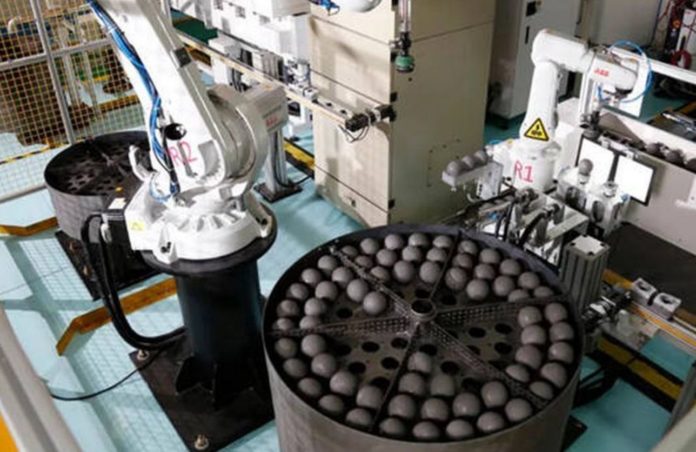The Asian country is ahead of the US and the UK in launching the world’s first modular mini-reactor: a new nuclear technology that promises clean, affordable, and safe electricity.
The China Nuclear Energy Association has announced the commissioning of a 200 megawatt Small Modular Reactor (SMR) that is already producing electricity to the country’s grid. The Chinese SMR is the first in the world to be operational, ahead of other countries such as the United States, Russia, and the United Kingdom, which are also betting on this type of technology.
The new reactor of the state-owned Chinese enterprise Huaneng Group, located in Shidao Bay in eastern Shandong province, is capable of generating 200 megawatts of power and is significantly smaller in size than typical reactors. According to Bloomberg, the Chinese SMR would be one-fifth the size of China’s first reactor design, the Hualong One. Because of their tiny size and modular architecture, SMRs are easier to manufacture and operate, lowering their cost significantly.
This modular reactor contains a gas-cooled high-temperature stone bed. The Chinese SMR generates electricity by heating helium rather than water, and, unlike the Fukushima reactor, is designed to shut down in the event of a malfunction.
China is currently testing a second SMR reactor as a first step toward linking it to the power grid with the previous one. According to a statement released by the China Nuclear Energy Association, this twin reactor will be fully operational by the middle of next year.
China: New World Nuclear Power
China’s commitment to nuclear energy is unmistakable. It is anticipated that the Asian country will invest approximately $440 billion in the construction of at least 150 new reactors over the next 15 years, which is more than the rest of the world has built in the previous 35 years. As a result, the Asian country would make its way to the United States and become the world’s first nuclear power generator.
According to the president of the state-owned Chinese enterprise General Nuclear Power Corp., the Asian country’s goal is to attain 200 megawatts of this form of energy by 2035. This, he claims, is enough to supply more than a dozen cities the size of Beijing.
Although the Xi Jinping government is also talking about other renewable energy sources to make the Chinese economy carbon neutral by the middle of this century, nuclear is the only energy source with explicit aims.
Russia is likewise betting on nuclear energy and SMRs. In reality, one of its designs contains two of these 35-megawatt reactors onboard the Akademik Lomonosov, a ship anchored off the Russian Arctic city of Pevek. This prototype has inspired them to develop this type of technology, and they have stated that they will have a 50-megawatt SMR ready by 2024.
While China and Russia are getting the most out of their SMRs, the United States is still in the development phase. Last April, the Biden Administration established a program to assist energy innovation and SMR deployment. For the first time, the US Nuclear Regulatory Commission has approved an SMR design. It comes from the Nuscale corporation, and it is already being sold all over the world. Natrium, which is financed by billionaires Bill Gates and Warren Buffett, is another business aiming to construct these types of reactors.
Nuscale will be the company in charge of constructing Europe’s first SMR. During the recent COP26 summit, Romanian President Klaus Iohannis and US Special Presidential Envoy for Climate Change John Kerry announced the agreement. The Romanian government intends to build a power plant comprised of six SMRs by 2028. Meanwhile, as we noted yesterday, the United Kingdom has revealed plans to build 16 of these mini-reactors across the country, the first of which may be operational in 2031, through the Rolls-Royce SMR partnership.
The suitability of this type of technology is still being debated in the rest of Europe. Following last week’s conference of Heads of State and Government, Brussels said yesterday that it is deferring the decision on whether to categorize nuclear energy as a green investment until 2022. France, a staunch supporter of this form of energy source, is in favor of nuclear power, as are Poland, the Czech Republic, Hungary, Romania, Slovakia, Slovenia, Finland, Croatia, and Bulgaria. Countries such as Spain, Germany, Luxembourg, Austria, and Denmark are positioned against. In fact, Spain intends to close the last of its seven nuclear power reactors in 2035.
You were reading: China beats West and starts world’s first nuclear mini-reactor
